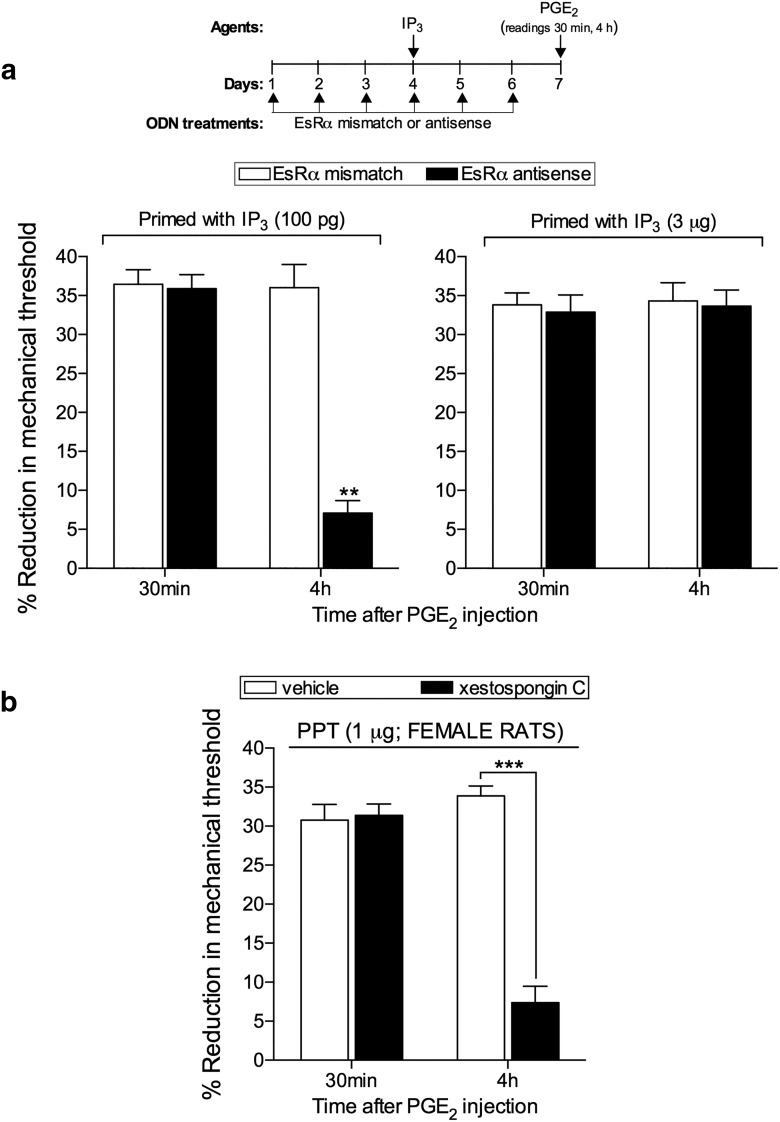Figure 3.
EsRα regulates the induction of hyperalgesic priming by IP3 in females. a, Female rats were treated with ODN AS (black bars) or MM (white bars) for EsRα mRNA, for 6 consecutive days. IP3 (100 pg, left; 3 μg, right) was injected on the dorsum of the left hindpaws on the fourth day of ODN treatment. On the seventh day, PGE2 (100 ng) was injected at the same site as IP3, and the mechanical nociceptive threshold evaluated, 30 min and 4 h later. No significant difference was observed in the mechanical nociceptive thresholds before the injections of IP3 and immediately before injection of PGE2 (data not shown). PGE2-induced hyperalgesia was still present 4 h after injection in all groups, except in the group that received the low dose of IP3 (100 pg) treated with ODN AS (F(1,10) = 31.89; **p = 0.0002, when the low-dose groups treated with ODNs are compared; F(1,10) = 0.1479; p = 0.7086, not significant, when the high-dose groups treated with ODNs are compared; two-way repeated-measures ANOVA followed by Bonferroni post hoc test). These results support the suggestion that EsRα regulates the ability of a low dose of IP3 to induce priming in the female rat. b, Female rats received an intradermal injection of vehicle (white bars) or the IP3 receptor inhibitor xestospongin C (0.2 μg, black bars) on the dorsum of the hindpaw. Ten minutes later, the specific EsRα agonist PPT (1 μg) was injected at the same site. After 1 week, testing for the presence of hyperalgesic priming was performed by injecting PGE2 (100 ng). Mechanical hyperalgesia was observed in both groups when evaluated 30 min after PGE2 injection. However, at the fourth hour, the magnitude of the PGE2-induced hyperalgesia was significantly smaller in the group previously treated with xestospongin C (F(1,5) = 69.81, ***p = 0.0004; when both groups are compared at the fourth hour; two-way repeated-measures ANOVA followed by Bonferroni post hoc test), indicating that the inhibition of IP3 receptors prevented the induction of priming by PPT (N = 6 paws all groups).

